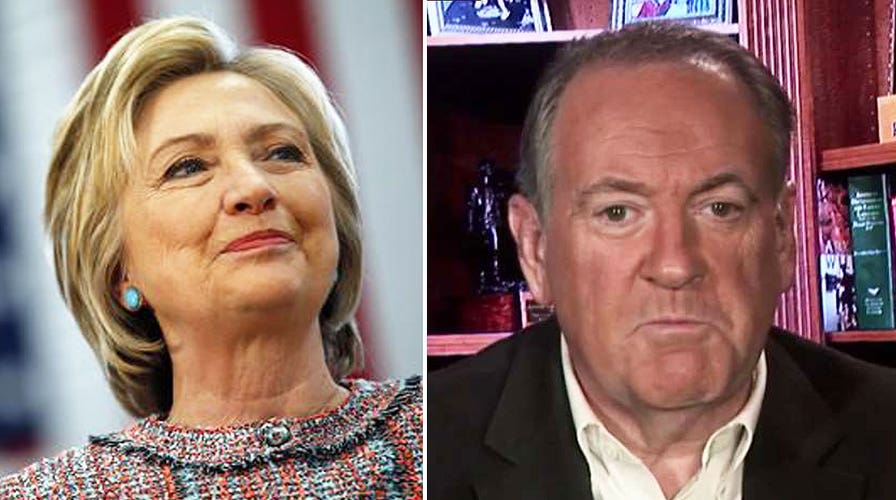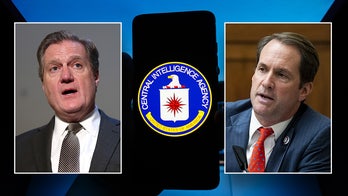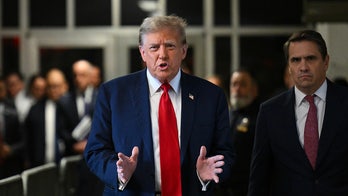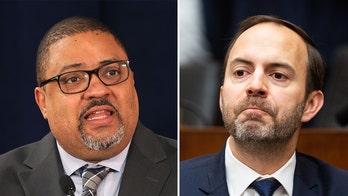Huckabee: How can union members trust Hillary Clinton?
Former Republican presidential candidate and a Fox News contributor on the battle for blue-collar votes
The final stretches of the 2016 White House race kicked off Monday with Hillary Clinton and Donald Trump making traditional Labor Day appeals to workers and labor unions across the country’s industrial heartland.
“Let’s have a big round of applause for labor,” Democratic vice-presidential nominee Gov. Tim Kaine said at Pittsburgh’s annual Labor Day parade, sponsored by labor unions.
“We have to make sure labor is right there with us,” Kaine continued. “We’re going to involve labor in everything we do. … And nobody understands team work like organized labor.”
The Virginia governor was joined on stage later by Vice President Joe Biden.
Later in the day, Clinton and Republican presidential nominee Donald Trump will hold separate events in Ohio -- like Pennsylvania a key battle-ground state whose economy relies in large part on manufacturing and where the labor vote is essential toward winning the state.
Trump, a wealthy businessman, and running-mate Indiana Gov. Mike Pence will participate in a morning round-table discussion with union members in Cleveland.
Trump is also expected to campaign at a fair in Youngstown, Ohio, in a nod to the state's role as a make-or-break proving ground for Republican presidential candidates.
No Republican has won the White House without winning Ohio and Trump is trying to overcome some splintering in the state party, which was supportive of Ohio Gov. John Kasich during the presidential primary.
Clinton will be in the city later in the day for a Labor Day festival with union leaders and workers.
While Labor Day has traditionally been the kickoff to the fall campaign, Clinton and Trump have been locked in an intense back-and-forth throughout the summer.
Clinton has questioned Trump's temperament and preparation to serve as commander in chief while seeking to connect the reality television star to the extreme "alt-right" movement within the Republican Party.
Trump visited a predominantly black church in Detroit on Saturday in a rare appearance with minority voters, aiming to counter Clinton's argument to moderate and suburban voters that he has allowed a racist fringe to influence his candidacy.
The start of full-fledged campaigning opens a pivotal month, culminating in the first presidential debate on Sept. 26 at Hofstra University in Hempstead, New York. Polls show Trump trailing Clinton in a series of must-win battleground states, meaning the debates could be his best chance at reorienting the race.
Clinton will have millions of dollars at her disposal this fall to air television advertising and power a sophisticated get-out-the vote operation in key states.
The former secretary of state raised a combined $143 million in August for her campaign, the Democratic National Committee and state parties -- her best month yet. She began September with more than $68 million in her campaign's bank account to use against Trump, who has not yet released initial fundraising totals for August.
Clinton was expected to attend the Labor Day festival in Cleveland alongside Kaine and AFL-CIO President Richard Trumka. Later in the day, she is scheduled to join with labor leaders in the Quad Cities community of Hampton, Illinois, across the Mississippi River from Iowa, where she is locked in a tight contest with Trump.
Democrats were fanning out across battleground states, also dispatching former President Bill Clinton to Detroit and Cincinnati and one-time Clinton primary rival Bernie Sanders to New Hampshire.
The destinations in Ohio, Pennsylvania, Michigan and New Hampshire point to Clinton's battleground map of approximately a dozen states that hold the key to the 270 electoral votes needed to claim the presidency.
Clinton was arriving in Ohio and Illinois aboard a new blue-and-white Boeing 737 campaign plane emblazoned with her slogan, "Stronger Together." She has mostly traveled by private jet during the primaries and the summer but was being accompanied on the plane by journalists for the first time.
Clinton has been pressured by media critics and Republicans alike to hold a news conference for the first time in 2016. She has not held a formal question-and-answer session with reporters since one in Iowa in early December.
The Associated Press contributed to this report.





